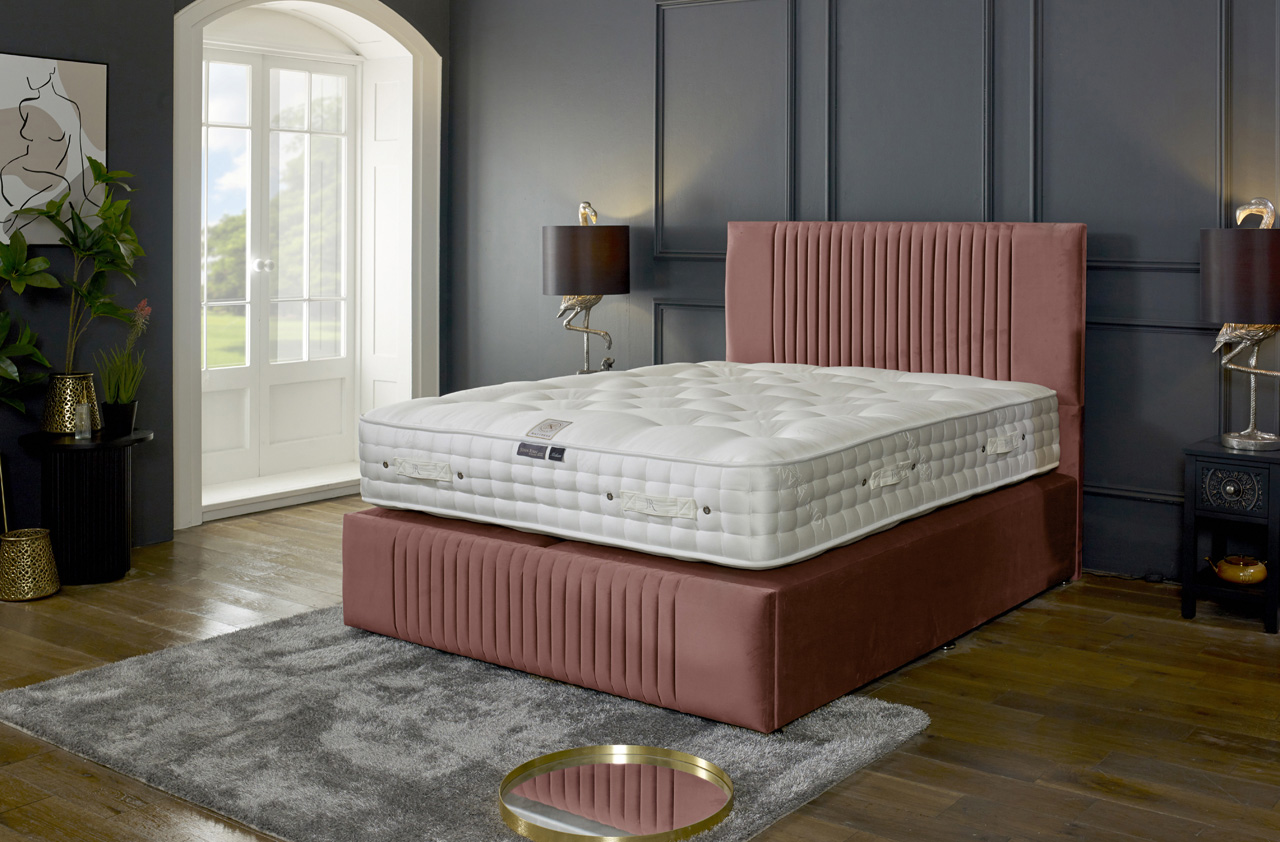Hi
At John Ryan by Design, we take mattress safety seriously, which is why all of our mattresses meet the Fire Retardant (FR) regulations set by UK law.
The majority of mattresses are manufactured with fire-retardant materials embedded into their design right from the start, usually in the cover fabric, or through the use of certain fire-resistant foam or padding layers. These measures are carefully tested during production to ensure they meet safety standards. Fire retardancy is a crucial part of the mattress’s overall design, as it ensures the product can withstand exposure to fire for a specific period, providing essential protection.
For our mattresses we use a plant based FR treatment to reduce the amount of manmade chemicals usually found in this process. We use flame retardant additives sourced from plants in our method (see point 2 below).
Plant-based fire retardants in mattresses are an eco-friendly alternative to traditional chemical treatments. These natural, non-toxic materials are increasingly being used to meet fire safety standards without the environmental and health risks associated with synthetic chemicals. Here’s how they work:
- Natural Fibers and Oils: Plant-based materials, such as wool, cotton, and flax, have naturally fire-resistant properties. Wool, for instance, contains lanolin, which makes it slow to catch fire. When woven into the mattress layers, these materials form a protective barrier that delays ignition and reduces the spread of flames.
- Flame Retardant Additives from Plants: Certain plant-based additives, like cellulose and pectin, can be treated to create a flame-resistant barrier. These materials are chemically altered to enhance their fire-retardant properties without relying on toxic substances like brominated or chlorinated flame retardants.
- Chitosan: Derived from the shells of crustaceans, chitosan is a natural, biodegradable substance often used as a plant-based fire retardant. It forms a protective coating that prevents the spread of flames by slowing down the combustion process.
- Clay-Based Retardants: Natural minerals like clay and silica can be used to create fire-retardant layers. These minerals don’t burn and are chemically inert, offering a non-toxic, sustainable way to improve a mattress’s fire resistance.
- How They Work: These plant-based materials work through physical and chemical reactions. When exposed to heat or flame, natural fibers like wool or cotton tend to char, which forms a protective barrier that helps prevent further combustion. For plant-based chemical treatments typically act as flame suppressants, reducing the intensity of flames and extending the time it takes for a fire to spread.
The primary benefit of using plant-based fire retardants is the reduction of harmful chemicals, making these mattresses safer for both consumers and the environment. However, plant-based fire retardancy alone may not be enough to meet all regulatory standards in some countries, and manufacturers may combine them with other materials to ensure compliance with fire safety regulations.

Unfortunately, adding fire retardant materials after the manufacturing process isn’t a viable solution. Once a mattress is made, any attempt to retrofit FR treatment could affect its structural integrity and comfort, and it likely wouldn't meet the necessary safety regulations. Proper fire retardant materials need to be part of the core construction, not something applied as an afterthought. That's why all of our mattresses come pre-designed with safety as a priority, giving you peace of mind that we adhere to the strictest fire safety standards from the outset.
Our commitment to quality and safety means we do everything right from the beginning—no shortcuts, no compromises.
We hope that helps answer your question.
John & Ryan



